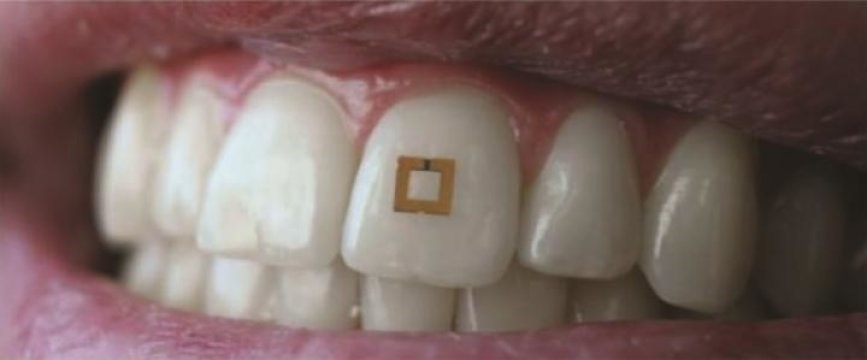By Manav Lamichhane '19
As technology progresses and refines over time, the integration of our personal health and wearable gadgets seems inevitable. Recently, the researchers at the Tufts University School of Engineering have designed a new sensor that can be placed on one’s tooth which allows the users to track their food intake. The sensor communicates wirelessly with a mobile device which is able to transmit the glucose, salt and alcohol intake level. The 2mm X 2mm slick design of the sensor allows for a much clear and compact user interface. The sensors also provide a hassle-free experience devoid of carrying bulky, uncomfortable gadgets or wires to track their food intake.
How does it work? The sensors consist of the outer layers and a central layer. The outer layers include two square-shaped gold rings and the "bioresponsive" central layer is responsible for absorbing and detecting the nutrients. The three layers together collect and transmit waves in radiofrequency spectrum. These waves are sent to a mobile device where the data is interpreted and analyzed.
The real time data collection shows a big trend to the direction we are heading in personal health. It is only a matter of time when we will be able to analyze all kinds of food we eat. This is particularly helpful in billion-dollar industries like bodybuilding, weight loss, and sports industry where tracking the right nutrients is essential for performance and result. The biggest benefactor could be healthcare industry which allows to personalize medicine and track the nutritional progress of patients. For example, for people who are diabetic they will be able to see a real time view of the type of food they are and especially be cognizant about their glucose levels. Although public access to this gadget will require more advancements, this development signals the path the future generation is embarking on, a symbiotic relationship between health and wearable gadgets.

